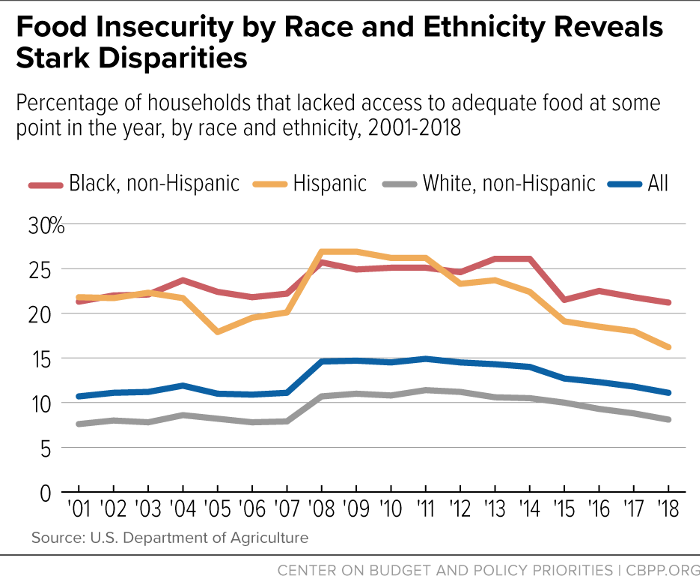 |
|
This study observed that US adults who are visually impaired were found to have a 216% greater likelihood of being food insecure. Photo: Center on Budget and Policy Priorities. Click image to enlarge. |
While diet is an obvious component of maintaining health, the extent to which it plays a role in eye health is less apparent outside of known associations such as AMD and diabetic retinopathy. A new study documents this relationship more closely, as researchers examined visual impairment (VI) and its association with food insecurity.
The retrospective study—including 62,075 participants—was conducted on US adults over the age of 18. All included individuals were below a threshold of 150% poverty, as to focus on those with relatively higher rates of food insecurity and those that would be eligible for social services, such as federal food assistance programs. Data came from the National Health Interview Survey from the years 2011 to 2018, and outcome measures included food insecurity status as either a binary (food secure or insecure) or ordinal (very low, low, marginal, high) variable. VI was defined to include trouble seeing, even while wearing glasses or contacts.
From the large sample, 16% of those reported visual impairment and 28% described circumstances of food insecurity. The researchers found a 216% higher chance of food insecurity for those adults that do have VI compared with those that don’t. Even more alarmingly, there was an increasing association of visual impairments with worse food security: there was a 159% higher risk of marginal food security for those with VI, 197% higher risk of low food security and 295% higher risk of very low food security. Some cohorts were significant in predicting food insecurity, including middle age, non-white race, lower attained education and lower poverty-income ratio.
The researchers suspect that part of the reason VI correlates with food security status is because poor ocular health not only may present challenges in acquiring and preparing food, but also because of accessibility and affordability of health care and social services; people who have a harder time getting healthcare tend to have higher rates of disease. The authors also propose the possibility of a bidirectional relationship between the two, citing as an example that food insecurity is positively associated with missing recommended eye examinations with diabetes. This then may lead to worse VI over time.
Helping establish food security for these vulnerable individuals is important, as adults who are food insecure face more emergency department visits and inpatient admissions. For older adults, food assistance programs, including SNAP, are associated with lower inpatient hospitalizations, suggesting that simple food security could alleviate much healthcare expenditure as well.
While this issue cannot be easily fixed, awareness of the results of this study are a good start to implement change. The authors suggest that “moving forward, mitigating the risk of food insecurity among low-income US adults involves not only addressing disabilities like VI in the clinical setting, but also advocating for the integration of medical and social services to facilitate access to food assistance.”
Kumar P, Brinson J, Wang J, et al. Self-reported vision impairment and food insecurity in the US: National Health Interview Survey, 2011-2018. Ophthal Epidem. October 6, 2022. [Epub head of print]. |

